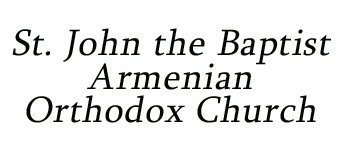FORTY MARTYRS OF SEBASTIA
Saturday, March 9, 2024
On Saturday, March 9, the Armenian Church commemorates the Forty Martyrs of Sebastia. Although the backgrounds and identities of the forty young soldiers are not certain, it is believed they came from Lesser Armenia and served in the Roman army. According to St. Basil of Caesarea (His sermon below), forty Christian soldiers refused to worship the Roman emperor while stationed in Sebastia in Armenia in 320. They remained faithful to their Christian faith. The soldiers were tried and condemned to death by stoning. Miraculously, when the sentence was being carried out, the stones would not reach the condemned soldiers, but would instead come back striking those throwing the stones. The soldiers were then thrown into a frozen lake and forced to stay there, unless they renounced their faith. Warm baths were prepared for anyone who would recant. Of the forty, only one gave up. When he did, another soldier, moved by the example of the suffering Christians, declared himself a Christian and took the apostate’s place. All forty died.
Some of our great Church Fathers like Basil, Gregory of Nyssa, Ephraim the Assyrian, and Sisian of Sebastia, wrote panegyrics about the forty martyrs, who are remembered each year during Lent on the Saturday following the median day of Lent. The Armenians have built and named churches in memory of the Forty Martyrs in various parts of the world.
The names of the 40 Martyrs of Sebaste (Sebastia) are Acacius, Aetius, Aglaius, Alexander, Angus, Athanasius, Candidus, Chudion, Claudius, Cyril, Cyrion, Dometian, Domnus, Ecdicus, Elias, Eunoicus, Eutyches, Eutychius, Flavius, Gaisus, Gorgonius, Helianus, Heraclius, Hesychius, John, Lysimachus, Meliton, Nicholas, Pholoctemon, Priscus, Sacerdon, Servian, Sisinus, Smaragdus, Theodulus, theophilus, Valens, Valerius, Vivanus, and Zanthias.
*****
According to St. Basil’s Homily on The Forty Martyrs delivered 50 years after their martyrdom:
“These holy martyrs suffered at Sebaste, in the Lesser Armenia, under the Emperor Licinius in 320. They were of different countries, but enrolled in the same troop….were of the Thundering Legion, so famous under Marcus Aurelius for the miraculous rain and victory obtained by their prayers….on orders of the emperor Licinius for all to sacrifice (to the emperor), these forty went bold up to (their commander Lysias) and said they were Christians and that no torments should make them ever abandon their holy religion….The governor, finding them all resolute, caused them to be torn with whips and their sides to be rent with iron hooks….the governor, highly offended at their courage and that liberty of speech with which they accosted him, devised an extraordinary kind of death, which, being slow and severe, he hoped would shake their constancy. The cold in Armenia is very sharp, especially in March and toward the end of winter….there was also at that time a severe frost. Under the wall of the town stood a pond that was frozen so hard that it would bear walking upon with safety. The judge ordered the saints to be exposed quite naked on the ice; and in order to tempt them the more Forty Martyrs powerfully to renounce their faith, a warm bath was prepared at a small distance from the frozen pond for any of this company to go to who were disposed to purchase their temporal ease and safety on that condition. The martyrs, on hearing their sentence, ran joyfully to the place and without waiting to be stripped, undressed themselves, encouraging one another in the same manner as is usual among soldiers in military expeditions attended with hardships and dangers, saying that one bad night would purchase them a happy eternity….The guards in the meantime ceased not to persuade them to sacrifice….of the whole of the number only one had the misfortune to be overcome….A sentinel was warming himself near the bath….While he was attending, he had a vision of blessed spirits descending from heaven on the martyrs….The guard, being struck with the celestial vision and the apostate’s desertion, was converted….threw off his clothes and placed himself in his stead amongst the thirty-nine martyrs. In the morning the judge ordered both those that were dead with the cold, and those that were still alive, to be laid on carriages and cast into a fire….Their bodies were burned and their ashes thrown into the river; but the Christians secretly carried off or purchased part of them with money.”


